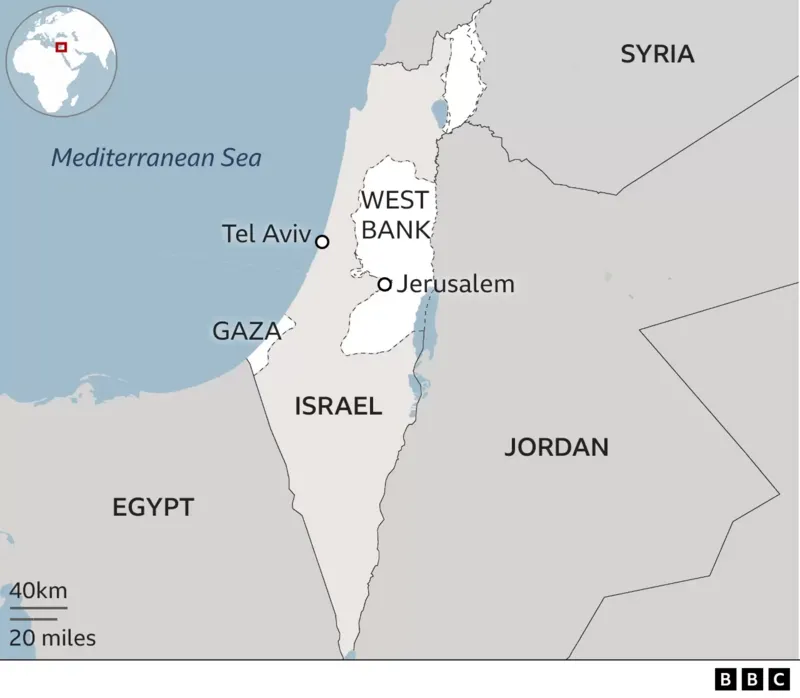





Disclaimer: Copyright infringement is not intended.
Context:
|
Palestinian statehood status |
●Recognition Status: As of 2024, over 130 of the 193 United Nations member states have recognized Palestine as a state. However, notable countries like the United States, Canada, and some European nations have not formally recognized it. ●UN Status: Palestine holds a non-member observer state status at the United Nations since 2012. This status was granted by the UN General Assembly, allowing Palestine to participate in UN debates and join certain international treaties and organizations. |
|
Basis statehood |
The Palestinian Authority (PA) seeks statehood based on the borders established before the Six-Day War in 1967, with East Jerusalem as its capital. This territory includes the West Bank, Gaza Strip, and East Jerusalem.
|
|
Major issues in statehood |
●Israeli Occupation: One major obstacle to Palestinian statehood is the ongoing Israeli occupation of the West Bank and Gaza Strip. Israel maintains control over these territories, which Palestinians see as their future state. ●Peace Process failure: The Oslo Accords in the 1990s aimed to establish a framework for resolving the Israeli-Palestinian conflict and achieving Palestinian statehood through negotiations. However, progress has been slow, and the peace process has faced numerous setbacks. ●Expansion of Israeli Settlements: The expansion of Israeli settlements in the West Bank has been a significant roadblock to the creation of a contiguous Palestinian state. These settlements are considered illegal under international law and have been a major point of contention in peace negotiations. ●Other challenges and obstacles: Other significant challenges, including security concerns, disputes over borders and sovereignty, the status of Palestinian refugees, and the status of Jerusalem, which is claimed by both Israelis and Palestinians as their capital. |
Way forward for Palestinian Issue:
Conclusion:
Source:
|
PRACTICE QUESTION Q. Match the following places recently seen in news: (A) Hamas (i) Israeli Defense Forces (B) Iron Dome (ii) Palestinian militant group (C) Sheikh Jarrah (iii) Missile defense system (D) IDF (iv) Neighborhood in East Jerusalem Options: A-(i), B-(ii), C-(iv), D-(iii) A-(ii), B-(iii), C-(iv), D-(i) A-(ii), B-(iii), C-(i), D-(iv) A-(i), B-(iii), C-(ii), D-(iv) Answer: A A) Hamas: ●Hamas is a Palestinian militant group and political party that operates primarily in the Gaza Strip. ●It was founded in 1987 during the First Intifada (Palestinian uprising against Israeli occupation) with the aim of resisting Israeli occupation and establishing an Islamic state in historic Palestine. ●Hamas is considered a terrorist organization by Israel, the United States, the European Union, and several other countries due to its use of violence, including suicide bombings and rocket attacks, against Israeli civilians. ●It also provides social services and operates as a political party, winning the legislative elections in the Palestinian territories in 2006. ●Hamas has engaged in numerous conflicts with Israel, including the recent escalation in May 2021, resulting in airstrikes, rocket attacks, and casualties on both sides. B) Iron Dome: ●Iron Dome is a missile defense system developed by Israel's Rafael Advanced Defense Systems, designed to intercept and destroy short-range rockets and artillery shells fired from distances of up to 70 kilometers away. ●It was first deployed in 2011 and has since been credited with intercepting thousands of rockets fired by Palestinian militants from the Gaza Strip. ●Iron Dome uses radar detection and tracking systems to identify incoming threats and launches interceptor missiles to neutralize them before they can reach their targets. ●The system has been highly effective in protecting Israeli civilians and infrastructure, significantly reducing casualties and damage from rocket attacks. ●Iron Dome's interception capabilities were put to the test during the recent escalation of violence in May 2021, intercepting a large number of rockets fired by Hamas and other militant groups. C) Sheikh Jarrah: ●Sheikh Jarrah is a neighborhood located in East Jerusalem, which has been at the center of a long-standing legal and political dispute between Palestinian residents and Israeli settlers. ●The neighborhood gained international attention in recent years due to efforts by Israeli settler organizations to evict Palestinian families from their homes and replace them with Jewish settlers. ●The legal dispute revolves around competing claims to land ownership, with Palestinian families citing deeds dating back to the Ottoman period, while Israeli settlers claim ownership based on Jewish property rights from the late 19th century. ●The evictions in Sheikh Jarrah have led to protests and clashes between Palestinian residents and Israeli security forces, exacerbating tensions in Jerusalem and fueling broader unrest in the region. ●The situation in Sheikh Jarrah has become a symbol of the broader Israeli-Palestinian conflict and the ongoing struggle for control over Jerusalem's contested areas. D) IDF (Israeli Defense Forces): ●The Israeli Defense Forces (IDF) is the military force of the State of Israel, responsible for defending the country against external threats and maintaining security within its borders. ●It consists of ground, air, and naval branches, as well as specialized units such as intelligence, cyber, and special forces. ●The IDF plays a central role in Israeli security policy and is often involved in counterterrorism operations, border security, and military campaigns against hostile entities such as Hamas in the Gaza Strip and Hezbollah in Lebanon. ●The IDF operates under civilian control, with the Israeli government and Ministry of Defense overseeing its activities and operations. ●During periods of heightened tensions, such as the recent escalation with Hamas in May 2021, the IDF conducts airstrikes, ground operations, and other military actions to protect Israeli civilians and deter threats posed by hostile groups. |







© 2025 iasgyan. All right reserved